Ina Garten’s Minestrone
Ina Garten’s Minestrone is a version of the classic soup, packed with a variety of veggies, tomatoes, beans, and pasta, all of which are suspended in a vibrant tomato broth. You can prepare it with your preferred vegetables, with or without meat, and with or without pasta. It is warm, delicious, and versatile!
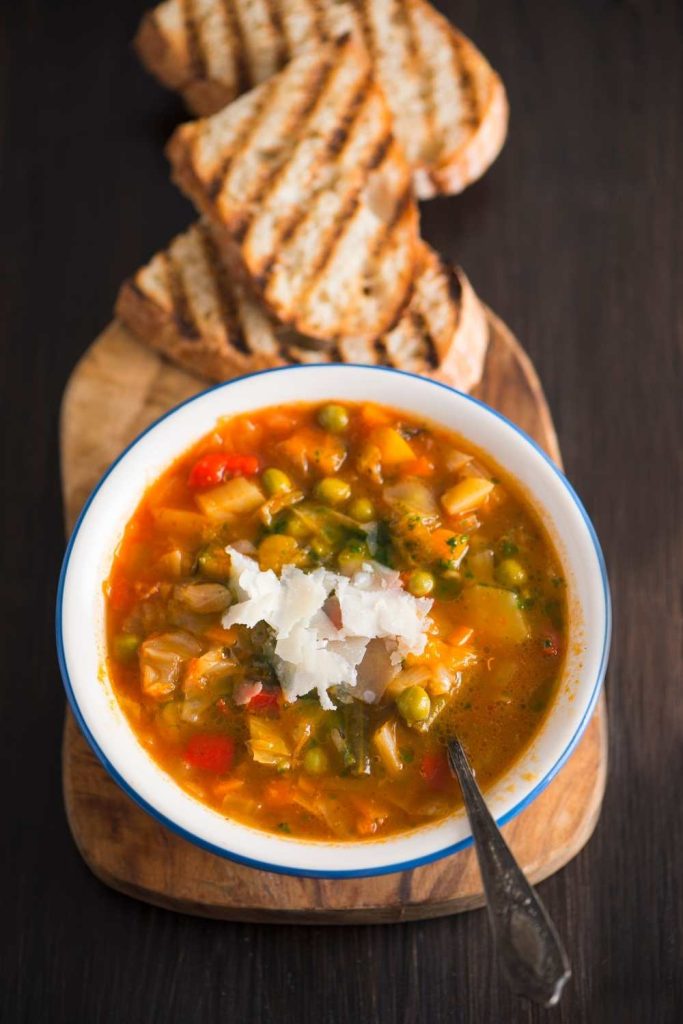
Why You’ll Love this Minestrone Recipe:
- After taking a substantial gulp of this minestrone soup recipe, Patrick exclaimed, “I love it,” and then proceeded to cram spoonful after spoonful of the soup into his mouth.
- Amid the holiday season, I wanted to share this minestrone soup recipe with you, which Ina Garten created. Not only is it quick and healthy, and uses affordable pantry ingredients and seasonal vegetables, but it is also fantastic for using up leftover turkey or ham.
- Simply clear out your refrigerator after Christmas to make this minestrone soup, which contains the greatest minestrone broth of any minestrone soup you’ve ever tasted, and you’ll have the best minestrone soup of your life.
What is Minestrone?
Minestrone is a hearty vegetable soup that has its roots in Italy. It is typically cooked with pasta or rice, or even both. Beans, onions, celery, carrots, leafy green vegetables, stock, parmesan cheese, and tomatoes are some of the most common components of this hearty soup.
Where Did Minestrone Come From?
Minestrone was initially referred to as “Cucina Povera,” which translates to “poor kitchen,” because it was traditionally prepared in Italy with leftovers to reduce food waste.
The term minestrone is derived from the Italian word “ministry,” which means soup, and the contemporary suffix “-one,” which signifies expansiveness. This is a description of how minestrone soup is created using a variety of various leftovers that are combined to form one substantial, straightforward, and affordable soup.
The term “minestrone” has evolved into a synonym for “a mix of all things,” making it the ideal supper for when you need to clear out the refrigerator!
What is the Difference Between Vegetable Soup and Minestrone?
What sets minestrone apart from other types of vegetable soups, namely vegetable soup? In its purest form, minestrone is only a heartier take on traditional vegetable soup. The vast majority of vegetable soups only include veggies, however, a minestrone typically also includes pasta and beans for added substance. This recipe is simple and delicious!
What Ingredients Do You Need to Make Ina Garten’s Minestrone?
- Extra virgin olive oil
- Butter (you may sub olive oil)
- Carrots, chopped
- Small onion, diced
- Garlic cloves, minced
- Sodium chicken broth (you may sub vegetable broth)
- Water
- Celery, chopped
- Fresh green beans, trimmed
- Zucchini, thickly sliced
- Fire-roasted tomatoes with juices
- Canned tomato sauce
- Canned kidney beans, drained and rinsed
- Dried basil
- Dried parsley
- Dried oregano
- Salt
- Sugar
- Black pepper
- Dried thyme
- Red pepper flakes
- Bay leaf
ADD LATER
- Uncooked small pasta shells
- Baby spinach
- Freshly grated Parmesan cheese
- Fresh basil (optional)
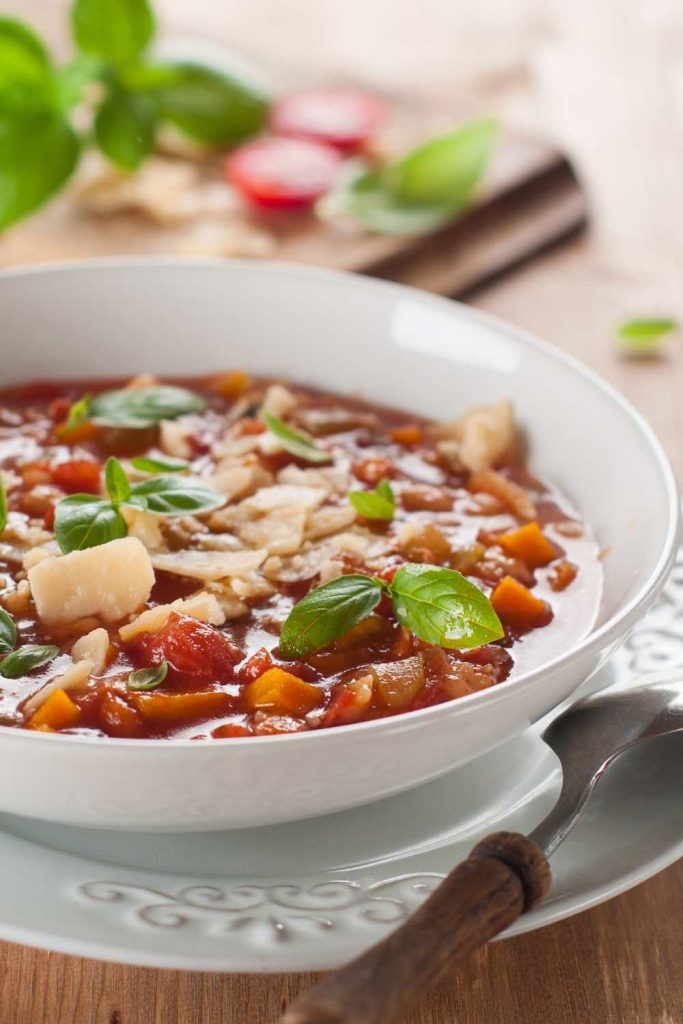
How to Make Ina Garten’s Minestrone
- In a large Dutch oven or soup pot, heat the butter and olive oil over medium heat.
- Add the carrots, onions, and garlic, and cook, stirring often, until the onions are translucent, about 7 to 9 minutes.
- Add the garlic and cook it for 30 seconds.
- Add the water followed by the other soup ingredients. Cover the soup and bring it to a boil.
- Remove the lid and continue cooking the soup at a low simmer for 10 minutes.
- Add the pasta and cook until it is just al dente.
- Remove the soup from the heat and stir in the spinach, allowing it to wilt for 1 minute.
- If you like a less “chunky” soup, you may thin it down by adding more water.
- Place some freshly grated Parmesan on the top of each bowl of soup along with basil (optional) before serving.
Recipe Tips
- Cook the Pasta Al Dente: Cook the pasta just until it is al dente, which means it should still have a little bit of bite to it. This is necessary because the pasta will continue to cook a little bit even after it has been removed from the heat, and there is nothing worse than ruining a whole pot of minestrone with soggy pasta.
- Cook the Pasta Separately: According to the instructions for this minestrone soup recipe, the pasta should be cooked in the same pot as the vegetables. If you don’t want to stand over your pasta while it’s cooking, you can just cook it on its own in a different pot and then add it to individual bowls. If you intend to freeze your minestrone, you will need to prepare the pasta in a separate pot before freezing it.
- Get Creative with the Vegetables: You may adjust the vegetables in this minestrone recipe, as it is very forgiving. You may replace the spinach with Swiss chard or baby kale, add potatoes (chop them into half-inch pieces and put them in with the green beans), add frozen peas and cabbage (add at the end with the spinach), and so on.
- Cooking the Zucchini: To ensure that the zucchini is cooked in the shortest period possible, ensure that you chop it into pieces that are at least one-quarter of an inch in size.
- Green Beans: Although I enjoy green beans when they are fresh, green beans are not my first choice when it comes to vegetables. But guess what?! In this minestrone soup recipe, they are my absolute favorite vegetable. Therefore, I cannot suggest them enough.
- Add Protein: I like using this minestrone soup as a foundation for any type of meat we happen to have on hand or any kind of meat we might be wanting. Shredded rotisserie chicken, any kind of ground meat (beef, turkey, or Italian sausage), or even some small meatballs are wonderful additions to this soup.
- Pre-Chopped Veggies: Vegetables that have already been chopped will help you prepare your minestrone soup in a very short amount of time. They will make this dish practically as easy as “dump and simmer.”
- Scale Down: You can reduce the ingredients if needed because the soup includes a good number of servings. I would advise reducing the ingredients if you do not have a large family or if you do not like to have leftovers. However, for a quick and easy meal that can be enjoyed for either lunch or supper, leftover minestrone is a great choice. Raise your hand if you’re one of those people!
- Rice Instead of Pasta: Feel free to replace the rice with pasta. Because I am such a huge admirer of wild rice, I often substitute it for pasta when I make this minestrone. If you decide to add rice, I suggest cooking it in a separate post so that you can guarantee it is cooked properly and prevent the vegetables in the soup from becoming overcooked.
- Consistency: It is entirely up to the individual to decide how “chunky” they would like their soup to be. Simply adding more water at the very end of the cooking process will make the minestrone soup smoother and less lumpy.
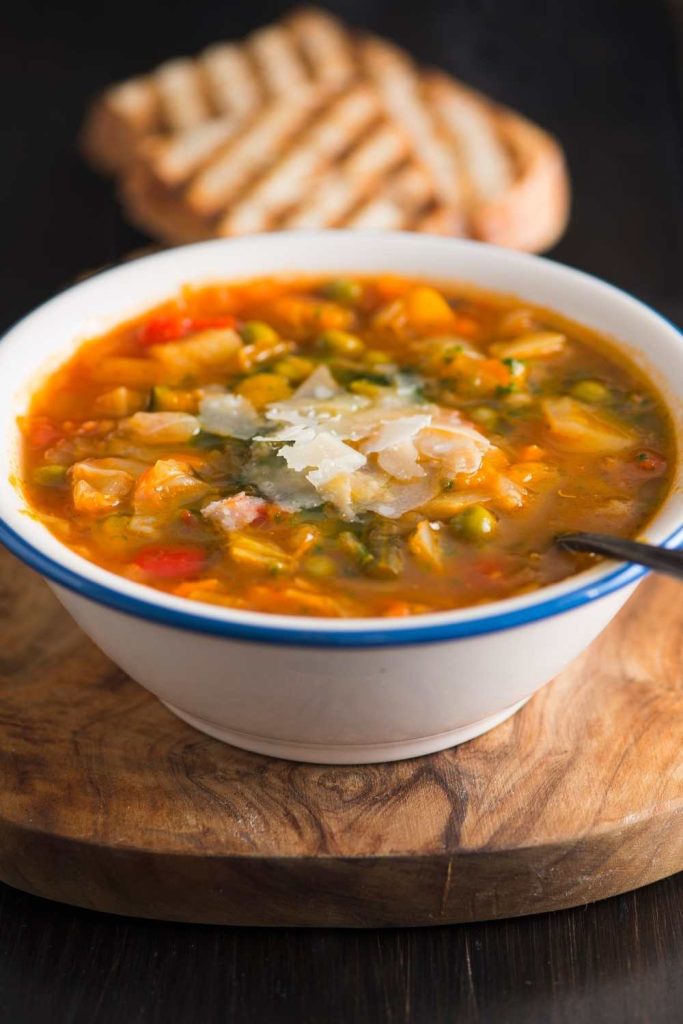
How Long Does it Take to Cook Minestrone?
To cook the minestrone, you simply bring everything to a boil and then reduce the heat to a simmer. Ina Garten’s Minestrone may take anywhere from 25 minutes to 3 hours to make depending on how long it takes the various components to cook.
Why is My Minestrone Bland?
Some people find that when they make vegetable minestrone, the finished product is on the bland side. It all depends on the herbs and spices that you choose to put in there. To begin, I recommend that you use some veggie broth. The next step is to incorporate a variety of herbs into the dish so that the overall flavor is enhanced.
What Kind of Pasta Should You Use in Minestrone Soup?
Small or micro pasta shells are my personal preference when it comes to preparing this minestrone soup. I have also tried rigatoni and medium pasta shells, but they did not provide the same level of satisfaction. Every mouthful will have the ideal proportion of pasta to vegetables if you choose to use little shapes of pasta that are around the same size as the chopped vegetables.
What Should You Serve With Ina Garten’s Minestrone?
Are you looking for something to go along with Ina Garten’s Minestrone? I have a recommendation for you to consider. The following is a list of options that will complement this hearty soup:
- Mexican Cornbread Casserole
- Cheesy Bread
- Twice Baked Sweet Potatoes
- Mexican Street Corn Salad
What Meat is in Minestrone Soup?
Because of the expense of meat, authentic minestrone soup has always been vegetarian. However, you can add any kind of meat if desired, such as leftover ham or turkey, rotisserie chicken, ground beef, ground turkey, Italian sausage, or bacon.
Although I call for chicken broth in my minestrone soup recipe, you are more than free to use vegetable broth in its place. The reason I use a meat-based broth (chicken broth) is that it has a more robust taste than vegetable broth.
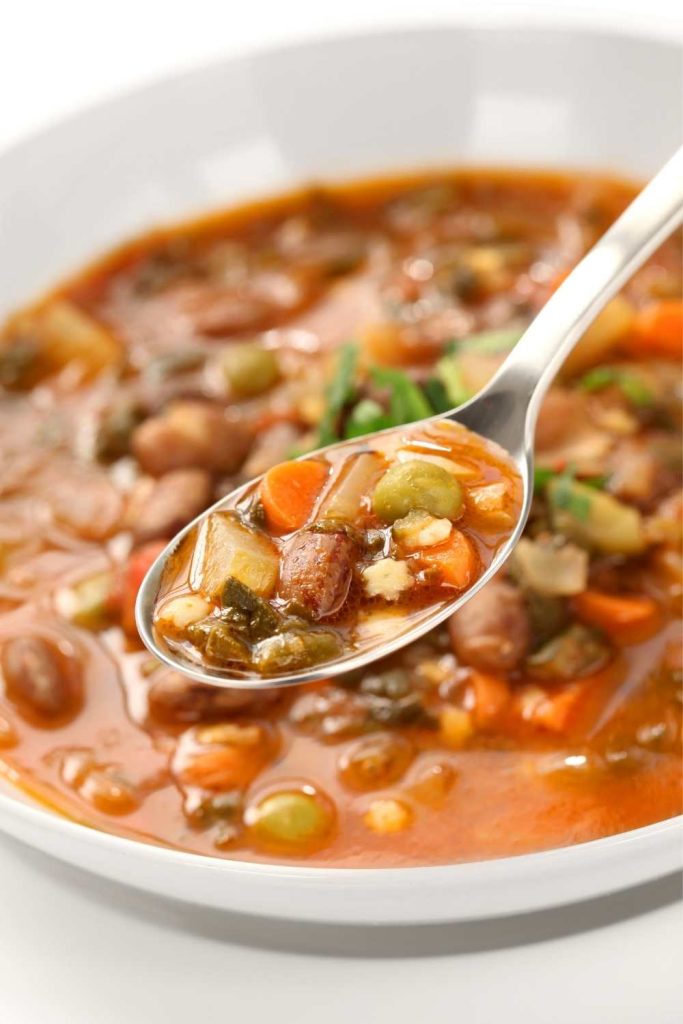
Is Minestrone Supposed to be Thick?
Yes, minestrone is a hearty soup that is made with a variety of veggies (often consisting of beans, tomatoes, carrots, celery, onions, and anything else that happens to be in your garden or kitchen), as well as tiny pasta and/or rice.
How Long does Ina Garten’s Minestrone Last in the Fridge?
You may keep Ina Garten’s Minestrone in the fridge for up to three days. The soup has to be cooled down and placed in the refrigerator as quickly as possible, preferably within the first two hours after it has been prepared.
Can You Freeze Ina Garten’s Minestrone?
Because of minestrone soup’s thick consistency, it is excellent to freeze. Simply, put the soup in a large container that is designed for freezing, and freeze it for up to three months. Then, when you are ready to eat the soup, you should thaw it out in the refrigerator the day before it is going to be consumed, and then reheat it on the stove.
How to Freeze Ina Garten’s Minestrone
Cool:
- When your soup is done cooking, take it off the heat and transfer it to a bowl that is appropriate for its volume. It should be allowed to cool at room temperature for a couple of hours.
Fill Your Plate:
- Next, figure out how you want to divide the soup into servings. It is possible to freeze the minestrone soup in one batch; however, I recommend that you divide the soup into individual servings before freezing it. This will allow you some versatility so that you can pull out smaller amounts to make a speedy lunch for yourself or pull out several containers if you need to serve a larger group.
Place in Appropriate Containers:
- Add your minestrone soup to the appropriate type of containers. Instead of storing the soup in freezer-safe bags, which may tear apart easily in the freezer, I advise that you use freezer-safe containers with lids, such as Tupperware containers.
Label and Freeze:
- Label the containers with today’s date and the use-by date and place them in the freezer. You may store the minestrone soup in the freezer for approximately three months.
How to Reheat Ina Garten’s Minestrone
In the Oven:
- Preheat the oven to 325 degrees Fahrenheit (160 degrees Celsius).
- Place the soup in an oven-safe Dutch oven, pot, or another oven-safe container. Cover it with a lid or aluminum foil and heat it in the oven until the soup is warmed through, about 15 minutes or longer for larger servings. If it appears to be drying out too much, you may stir in more water or stock.
In the Microwave:
- Place the soup in a microwave-safe bowl and heat it for 2 minutes.
- Continue to heat the soup 30 seconds at a time until it is heated through.
FAQ Section
There is no need to add any sort of thickener to this soup. Nevertheless, if you want the soup to have a creamier consistency and be thicker, you can mix 1 tablespoon of cornstarch with 1 tablespoon of water in a small bowl, and then add this mixture to the soup. Then, once the soup has simmered for a few minutes, it will have reached the desired consistency and be ready to serve.
This is the perfect time of year to enjoy a bowl of soup. Research conducted by Barbara Rolls who is the author of the book “Volumetrics Eating Plan” found that eating soup can greatly assist with weight reduction. Soup is known to warm both the body and the soul. It not only makes you feel full but also causes you to eat more slowly and is quite enjoyable. This quick and easy minestrone can be on the table in less than half an hour.
Minestrone is a hearty soup that is made with pasta and several vegetables. To make this soup heartier, you may opt to include any amount of vegetables and carb-heavy ingredients. Nevertheless, celery, onions, garlic, carrots, tomatoes, pasta, olive oil, and shredded parmesan are frequently used as the primary components, and the dish often has a garnish of shredded cheese.
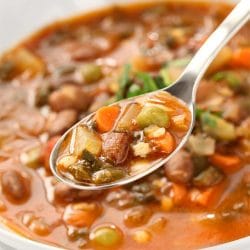
Ina Garten’s Minestrone
Ingredients
- 1 tablespoon extra virgin olive oil
- 1 tablespoon butter you may sub olive oil
- 2 medium-sized carrots chopped (1 cup)
- 1 small onion diced
- 4-6 garlic cloves minced
- 6 cups low sodium chicken broth you may sub vegetable broth
- 2 cups water
- 3 stalks celery chopped (1 cup)
- 5 ounces fresh green beans trimmed and cut into 1-inch pieces
- 1 zucchini thickly sliced (1/4 inch) and quartered
- 2 (14.5 ounce) cans diced fire-roasted tomatoes with juices
- 1 (15 ounce) can tomato sauce
- 1 (15.5 ounce) can kidney beans drained and rinsed
- 1 ½ teaspoon each dried basil and dried parsley
- 1 teaspoon each dried oregano, salt and sugar
- ½ teaspoon each black pepper and dried thyme
- 1/8-1/4 teaspoon red pepper flakes
- 1 bay leaf
Add Later
- 1 ½ cups uncooked small pasta shells
- 2-3 cups baby spinach
- freshly grated Parmesan cheese
- fresh basil optional
Instructions
- In a large Dutch oven or soup pot, heat the butter and olive oil over medium heat.
- Add the carrots and onions and cook, stirring often, until the onions are translucent, about 7 to 9 minutes.
- Add the garlic and cook it for 30 seconds.
- Add the water followed by the other soup ingredients. Cover the soup and bring it to a boil.
- Remove the lid and continue cooking the soup at a low simmer for 10 minutes.
- Add the pasta and cook until it is just al dente.
- Remove the soup from the heat and stir in the spinach, allowing it to wilt for 1 minute.
- If you like a less “chunky” soup, you may thin it down by adding more water.
- Place some freshly grated Parmesan on the top of each bowl of soup along with basil (optional) before serving.
Notes
- Cook the Pasta Al Dente: Cook the pasta just until it is al dente, which means it should still have a little bit of bite to it. This is necessary because the pasta will continue to cook a little bit even after it has been removed from the heat, and there is nothing worse than ruining a whole pot of minestrone with soggy pasta.
- Cook the Pasta Separately: According to the instructions for this minestrone soup recipe, the pasta should be cooked in the same pot as the vegetables. If you don’t want to stand over your pasta while it’s cooking, you can just cook it on its own in a different pot and then add it to individual bowls. If you intend to freeze your minestrone, you will need to prepare the pasta in a separate pot before freezing it.
- Get Creative with the Vegetables: You may adjust the vegetables in this minestrone recipe, as it is very forgiving. You may replace the spinach with Swiss chard or baby kale, add potatoes (chop them into half-inch pieces and put them in with the green beans), add frozen peas and cabbage (add at the end with the spinach), and so on.
- Cooking the Zucchini: To ensure that the zucchini is cooked in the shortest period possible, ensure that you chop it into pieces that are at least one-quarter of an inch in size.
- Green Beans: Although I enjoy green beans when they are fresh, green beans are not my first choice when it comes to vegetables. But guess what?! In this minestrone soup recipe, they are my absolute favorite vegetable. Therefore, I cannot suggest them enough.
- Zucchini: a view from a great distance depicting a large portion of the classic Minestrone Soup Recipe
- Add Protein: I like using this minestrone soup as a foundation for any type of meat we happen to have on hand or any kind of meat we might be wanting. Shredded rotisserie chicken, any kind of ground meat (beef, turkey, or Italian sausage), or even some small meatballs are wonderful additions to this soup.
- Pre-Chopped Veggies: Vegetables that have already been chopped will help you prepare your minestrone soup in a very short amount of time. They will make this dish practically as easy as “dump and simmer.”
- Scale Down: You can reduce the ingredients if needed because the soup includes a good number of servings. I would advise reducing the ingredients if you do not have a large family or if you do not like to have leftovers. However, for a quick and easy meal that can be enjoyed for either lunch or supper, leftover minestrone is a great choice. Raise your hand if you’re one of those people!
- Rice Instead of Pasta: Feel free to replace the rice with pasta. Because I am such a huge admirer of wild rice, I often substitute it for pasta when I make this minestrone. If you decide to add rice, I suggest cooking it in a separate post so that you can guarantee it is cooked properly and prevent the vegetables in the soup from becoming overcooked.
- Consistency: It is entirely up to the individual to decide how “chunky” they would like their soup to be. Simply adding more water at the very end of the cooking process will make the minestrone soup smoother and less lumpy.

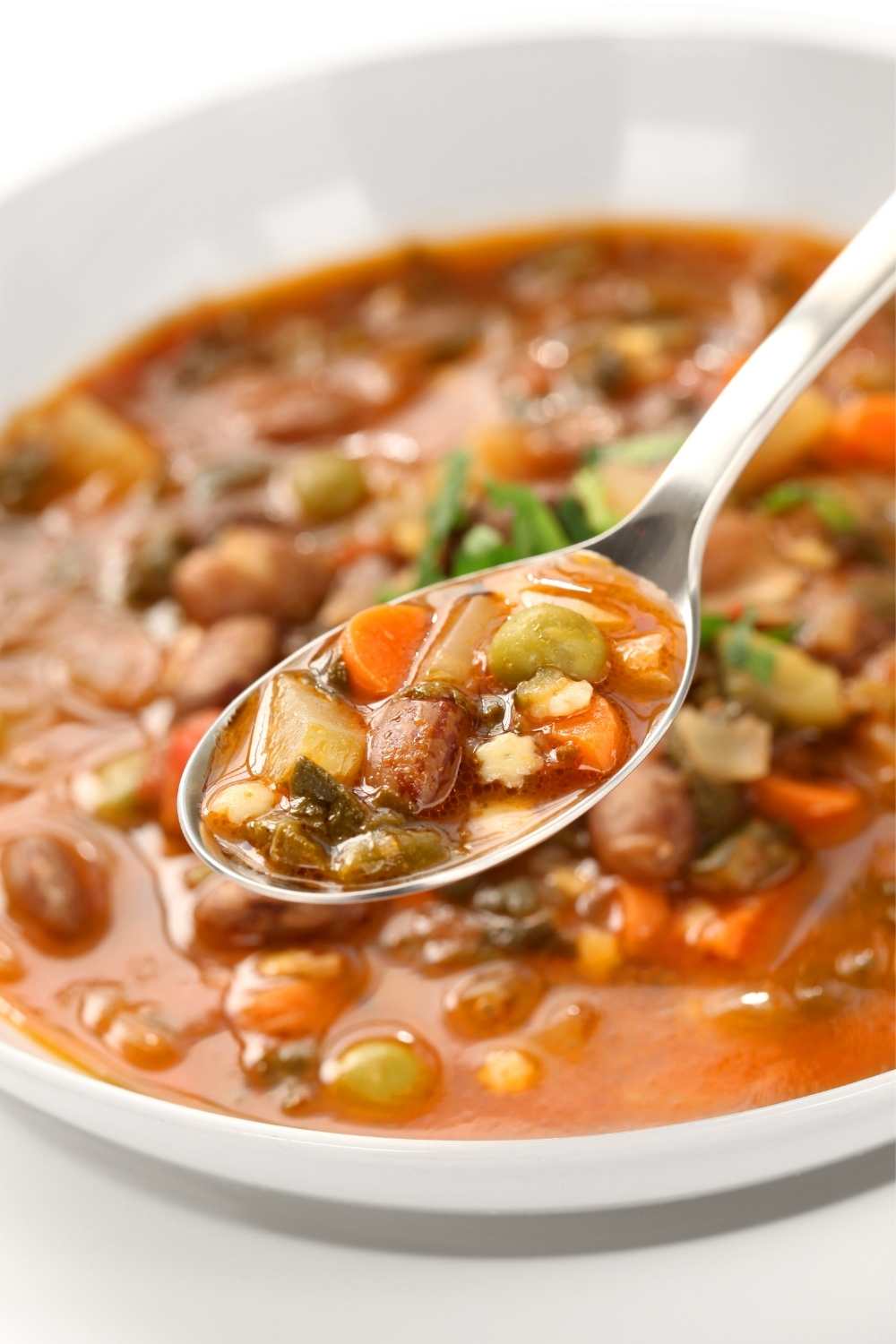
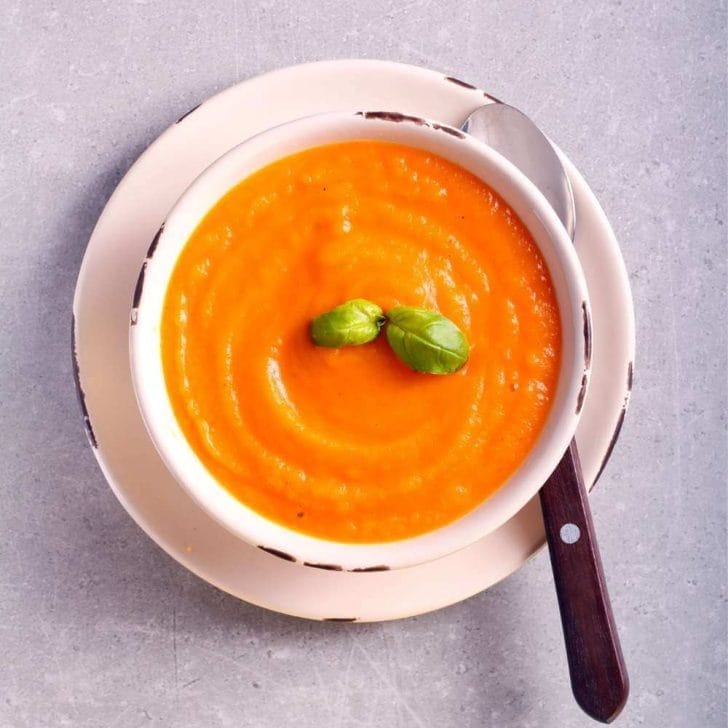
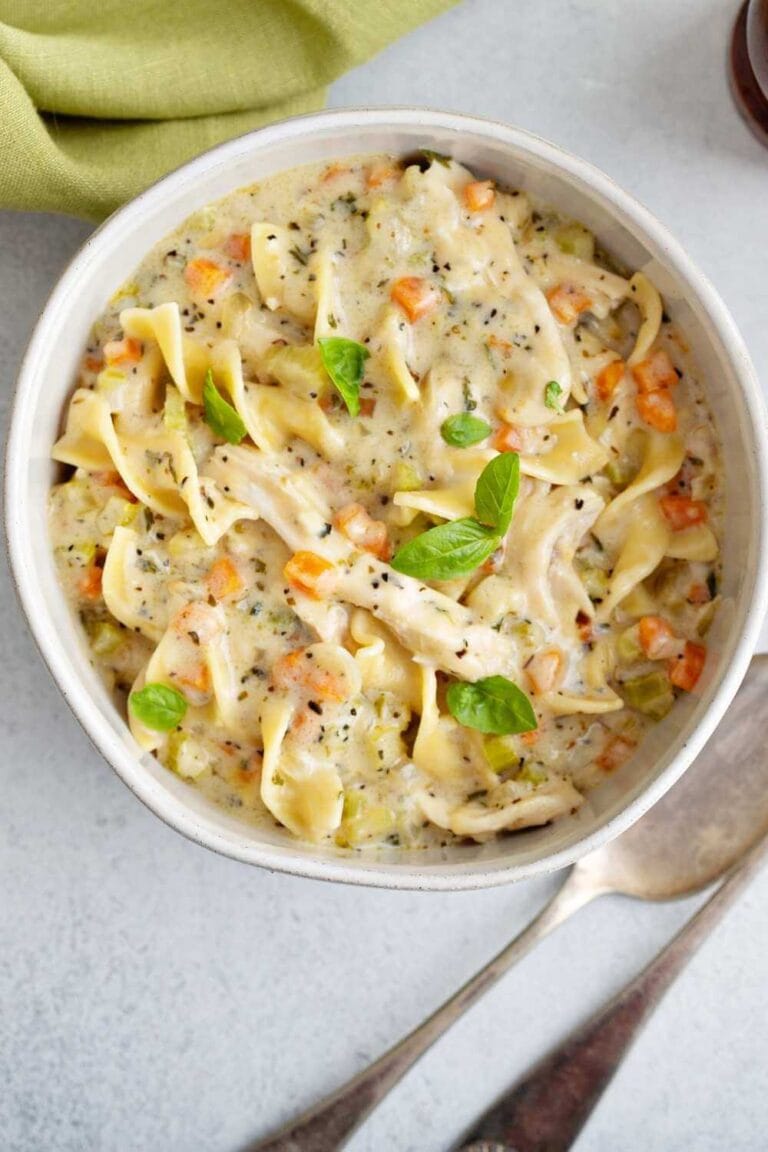

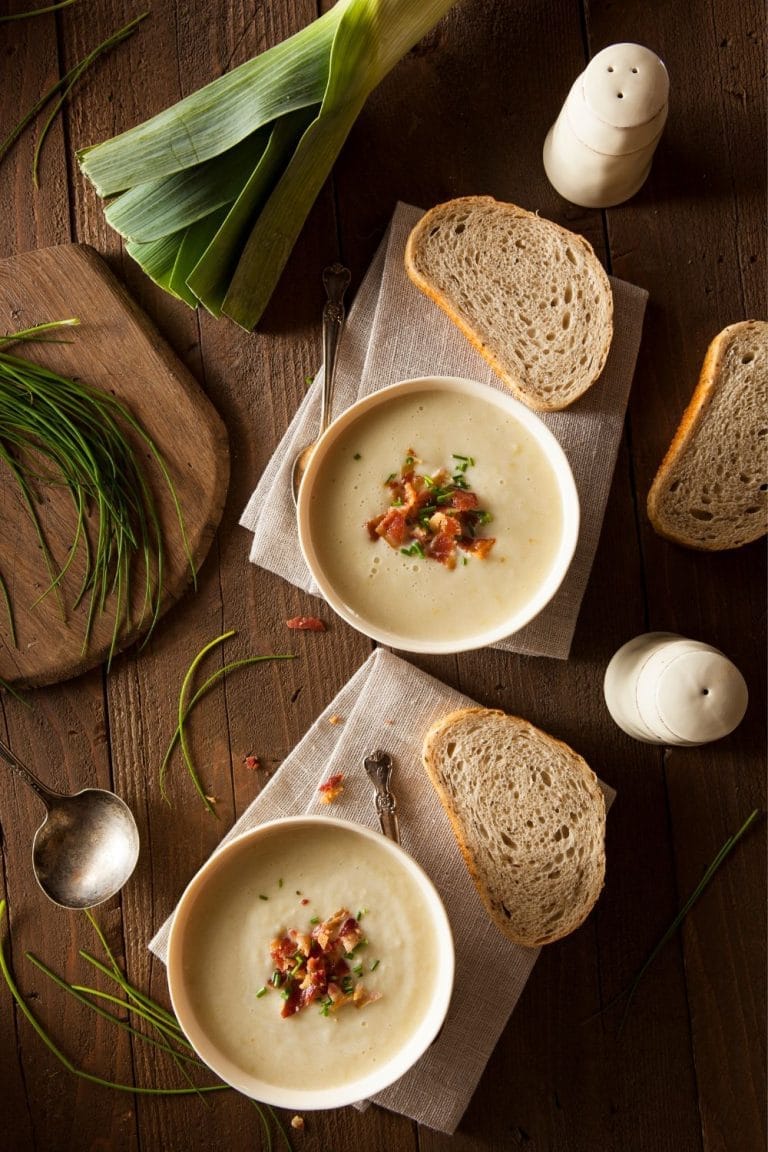
Great healthy family recipe, thank you!